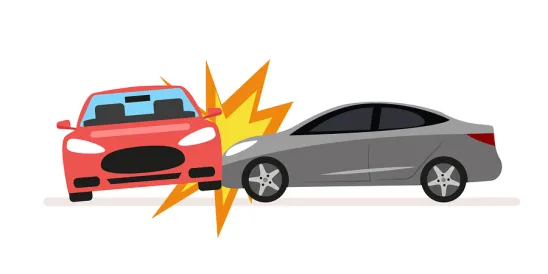Underinsured Motorist ("UIM") coverage is an incredibly important source of insurance in car accident cases involving personal injuries.
Liability insurance pays claims for someone when they are at-fault for an accident; so, this coverage pays compensation to other people. UIM coverage, in contrast, pays compensation to the injured party themselves if they are hurt by a driver who does not have enough liability insurance to cover the injured party's damages. UIM coverage is not required in North Carolina. But, many North Carolinians have UIM coverage, or it may otherwise apply to a wreck.
When representing an injured party, or the family that has lost a loved one, it is important to ensure that all sources of potential recovery are fully explored. When there is not enough liability insurance, this includes searching for all potential UIM coverage. This can be a complex process, and, unfortunately, significant sources of recovery can be missed. It consequently makes sense to consult with an experienced personal injury attorney to assist with the investigation and analysis of all potential insurance.
The Basics of UIM Coverage
Liability insurance coverage protects your assets and also protects any person you might injure by supplying funds to be paid toward their bodily injury (or property damage). All vehicles in North Carolina are required to have liability insurance. The minimum requirements for individual coverage in North Carolina are $30,000 for bodily injury to one person, $60,000 for bodily injury to two or more people, and $25,000 for property damage. So, when someone is injured in a wreck by the negligence of another, the first source of recovery is any liability insurance covering the at-fault party.
UIM coverage, in contrast, applies when the insured owner or driver is injured by the driver of a motor vehicle without insurance coverage sufficient to fully compensate for all resulting injuries. Thus, in these situations, the injured party is compensated under their own personal insurance policy in addition to the insufficient policy of the person at fault.
For example, suppose you have $250,000 in per-person UIM coverage, and you are injured due to someone else's negligence. The at-fault driver has $30,000 in coverage. If you have significant medical bills or other personal injury damages, the at-fault driver's insurance would tender the full $30,000 in liability funds. Then, your own insurance company would pay up to an additional $220,000 (to get to $250,000 total) as part of your UIM coverage, depending on the total damages. Thus, a total of $250,000 in coverage is available pursuant to your UIM policy ($30,000 in liability funds, plus the $220,000 needed to reach the $250,000 total).
North Carolina drivers are not required to have UIM coverage. All drivers should purchase this insurance, however, because it is relatively inexpensive and protects them and others (including their passengers and resident family members) who are in an accident. Various levels of UIM coverage are available under North Carolina law, all the way up to $1 million. Specialized "umbrella" policies also can provide additional UIM coverage.
Researching All Sources of UIM Coverage
Multiple UIM policies can apply when someone is injured in an accident. This is referred to as "stacking" multiple coverages. Indeed, one of the most helpful benefits lawyers can provide after a car wreck is exploring other possible sources of insurance coverage. It is not uncommon for injured individuals to "miss" other sources of recovery. And, if they sign a broad settlement agreement or release in accepting one set of insurance proceeds, they may never be able to recover under other available insurance policies.
Insurance follows the car in North Carolina. So, if the liability insurance limits are not sufficient to pay an injured party's damages, their lawyer should first look to see if the policy insuring the specific car involved in the wreck (that the injured party was occupying) has UIM coverage. This is true even when the injured party is driving someone else's car or is a passenger in someone else's car. Again, insurance first "follows the car" in North Carolina.
Second, consider every insurance policy on which the injured party was a named insured. Do they own a separate vehicle? Do they own additional vehicles beyond that? A motorcycle? The injured party will not be able to stack coverages if these additional vehicles were insured under the exact same policy as the car involved in the wreck. (There is no "intra"-policy stacking in North Carolina.) But, if these other vehicles are on a separate insurance policy (i.e., with a distinct policy number), then the UIM coverage can be stacked, or added together ("inter"-policy stacking is allowed).
Next, the policies of those living in the same household and who are related by blood or marriage to the injured party also can be stacked together. Most insurance policies apply to anyone who is a resident of the same household as the insured, who also is related to the insured by blood or marriage. For instance, a college student who still maintains a residence at home could combine her own UIM policy with that covering her mom and dad if they have separate vehicles with separate insurance policies. The term "resident" has a unique meaning under the law and is very fact-specific. Someone can have multiple residents (such as the college student example). These residency questions can become complicated, including when dealing with step-parents, multi-family households, or college students. As a result, it is very important to fully investigate the living arrangements of an injured party and examine the applicable law.
Consider an example. Calvin is driving Addie's car when he is in a car wreck caused by Allen when Allen runs a red light. Allen has $30,000 in liability insurance coverage. Addie has $50,000 in UIM coverage for her car. Calvin has his own insurance policy (for his car), providing $250,000 in UIM. Calvin lives with his parents, who have a separate policy with UIM limits of $100,000. All of these UIM policies can be stacked together ($50,000 + $250,000 + $100,000) for a total of $400,000 in available UIM coverage for Calvin. Subtracting the $30,000 in liability coverage from Allen's liability insurance policy (the at-fault driver) means that Calvin's attorney can reach up to another $370,000 in UIM to help pay his damages—such as medical expenses, lost wages, and pain and suffering.
Conclusion
Sadly, sometimes car accidents involve serious personal injuries. If someone is in a car accident and suffers such injuries, it is important to fully review any and all potentially applicable insurance to see what types and amounts of coverage may be available. This is particularly true with UIM coverage. Involving an experienced, committed attorney helps protect an injured party's rights and ensure they receive guidance through a challenging, and often complex, situation. Again, one of the most important role an attorney can provide is to help guide their client through the applicable insurance issues and help ensure they are not missing potential insurance coverages that can help compensate for the full scope of injuries and other losses.





 />i
/>i

